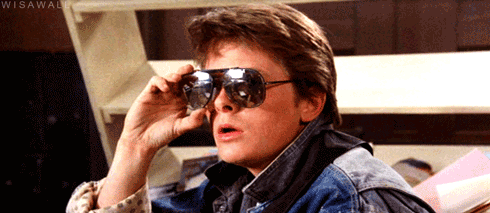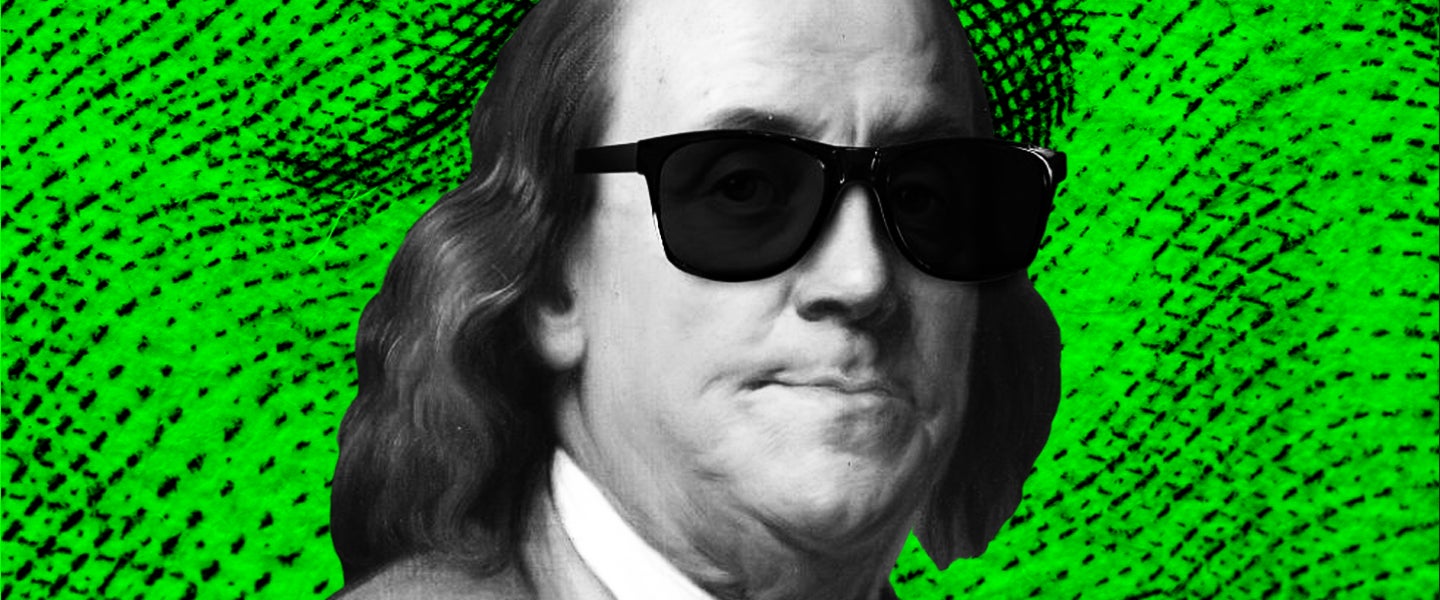The sun’s ultraviolet rays, which hurtle toward you from 93 million miles away at the speed of light, will fuck you up. Any idiot knows that sunglasses are crucial eye protection — they are, in a way, a health-care product that helps prevent cataracts and macular degeneration, as well as being a fashion accessory. But why are they so expensive? It’s just plastic! (And some tiny metal hinges.) And yet, they cost hundreds! What’s the markup on them? Is there some kind of dark and shadowy (sorry) monopoly behind it all? We squinted until we saw some answers.

Sunglasses are made of… what again?
Nothing special, really. Lenses can be made of glass or plastic (specifically, acrylic, polycarbonate, CR-39 or polyurethane). Frames are made of plastic, nylon or metal, with metal hinges. The materials continue to get lighter, more flexible and more scratch-resistant over time, but these aren’t generally revolutionary treatments or materials that require billions of dollars of R&D.
What’s it cost to make sunglasses?
A lot less than it says on the price tag! Sunglasses selling for hundreds of dollars are made for $10 to $20, and they’re often made in China.

Jesus fucking Christ. Who’s behind the giant markups, then?
It’s not David Caruso — no, it’s far worse. The sunglasses industry is literally a monopoly: a ridiculously-named Italian company called Luxottica that sounds like something out of Zoolander. Never heard of them? You’ve certainly heard of their brands, because they control EVERYTHING. They either own or manufacture sunglasses by (deep breath) Armani, Burberry, Chanel, Gucci, Dolce & Gabbana, Michael Kors, Miu Miu, Oakley, Oliver Peoples, Persol, Prada, Ralph Lauren, Ray-Ban, Tiffany, Versace and many others.

Wow.
Not finished! Luxottica also owns 9,000 retail locations worldwide. If you’ve ever been to a mall, you’ve been to a Sunglass Hut. If you’ve been to a fancy mall, you’ve been to an Oliver Peoples store or an Oakley store, too. Luxottica owns all of them. Anything you buy there, you’re paying Luxottica twice! The corporate giant also rules prescription eyewear: all LensCrafters, Pearle Vision, Sears Optical, Target Optical and other stores, which are, obviously, stocked with Luxottica-brand frames.
Oh, and Luxottica also owns the nation’s second-largest vision insurance company, EyeMed Vision Care. And in 2018 it merged with Essilor, which is only one of the world’s largest makers of eyeglass and contact lenses. The behemoth is now called EssilorLuxottica. If you own sunglasses and especially eyeglasses, there’s a great chance you already own something by this company — or rather, that this company owns your eyesight.
Long story short: Luxottica is the reason why the Ray-Ban Wayfarers Tom Cruise resurrected in Risky Business reportedly cost around $30 at the time, but will now set you back $154.

That’s some monopoly.
Breathtaking, isn’t it? People freak the fuck out about the Trilateral Commission, the Bilderberg Group or Bohemian Grove, but little do they realize there’s a far more mundane — and, yeah, shady — industry that’s been manipulating millions of customers for years. Basically, they own most of the sunglass name brands as well as the entire supply chain as well as the method of payment.
The founder of Luxottica, Leonardo Del Vecchio, is described as part Charles Foster Kane and part Godfather — a Voldemort-like figure whose name people in the industry literally try to avoid mentioning. A former Luxottica executive told The Guardian, “Honestly, he kind of rules by fear.” Even his daughter admits, in an otherwise hagiographic biography, that she was scared of him.
So by how much does he mark up his sunglasses?
You sure you wanna know? (Of course you do.) Okay: Luxottica’s markup is fucking insane — 1,000 percent or more. LensCrafters’ founder told the Los Angeles Times in 2019, “You can get amazingly good frames, with a Warby Parker level of quality, for $4 to $8. For $15, you can get designer-quality frames, like what you’d get from Prada.” He went on to say that the price of really expensive eyeglasses “is ridiculous. It’s a complete rip-off.”
And yet people pay these prices.
Yes — just like they do the other designer products that have designer’s names on them. Sure, designer clothes and accessories are (usually) original designs and might be constructed of luxurious materials and even be well made, but everyone knows that what you’re really paying for is the designer’s name and logo. So it goes with sunglasses.
The pricing of sunglasses, just like with watches, indicates that luxury ones are a Veblen good (the term is named after the guy who coined the phrase “conspicuous consumption,” so he knows what he’s talking about). Veblen goods are unique because they invert the laws of supply and demand. Basically, with Veblen goods, as the price increases, so too does the demand. Why? Because people want and expect to pay a lot of money for these classes of goods! Luxottica is presumably all too happy to oblige.
And as we all know, sunglasses are a style move. Part of every true Hollywood leading man’s flex appeal involves a great pair of sunglasses. Between style and health, what are you gonna do, not wear sunglasses?
Is anything being done about this?
Seriously? No. The Federal Trade Commission has been driving with its hands off the wheel for years in choosing not to regulate all sorts of billion-dollar industries — you think they’re going to trouble themselves with glasses? Regulators here and in Europe allowed the Essilor-Luxottica merger to go right ahead. The Guardian summarized the merger succinctly: “In seven centuries of spectacles, there has never been anything like it.”
Why aren’t there more cheap sunglasses out there?
They exist. California brands like Goodr and Knockaround sell sunglasses for a fraction of the price of Luxottica’s, and, of course, Warby Parker has become wildly successful in the past decade with a vast line of modestly priced eyeglasses and sunglasses by playing the disruptor (and by being very well funded). But the facts are as follows: It’s super difficult to play against a monopoly, and it’s also not necessarily easy to compete on price/value when so many people perceive sunglasses as somewhat of a luxury good.
For those who just want the cheapest sunglasses around, there’s of course a vast market of drugstore sunglasses, which are usually adequate at blocking UV rays. And there are plenty of obscure brands all over Amazon for less than $100 — or even $20. Just try to avoid buying shades off the sidewalk vendors.
So the price isn’t coming down anytime soon, huh?
Not as long as a single company is pretty much monopolizing its industry and can set its own prices. Luxottica’s CEO said in a 2012 segment of 60 Minutes about Luxottica, “Everything is worth what people are ready to pay.”
He’s right — in the worst sort of way. You can get adequate sunglasses anywhere, but if you want the ones people perceive to be nice, you’ll have to pay what Luxottica tells you to.
Besides blocking UV rays, you know what else sunglasses are great for? Avoiding eye contact. That’s why they’ve always had the whiff of an eff-you quality to them — and that’s the entire reason for the old “Deal With It” meme. It turns out the actual sunglass industry feels exactly the same way.

